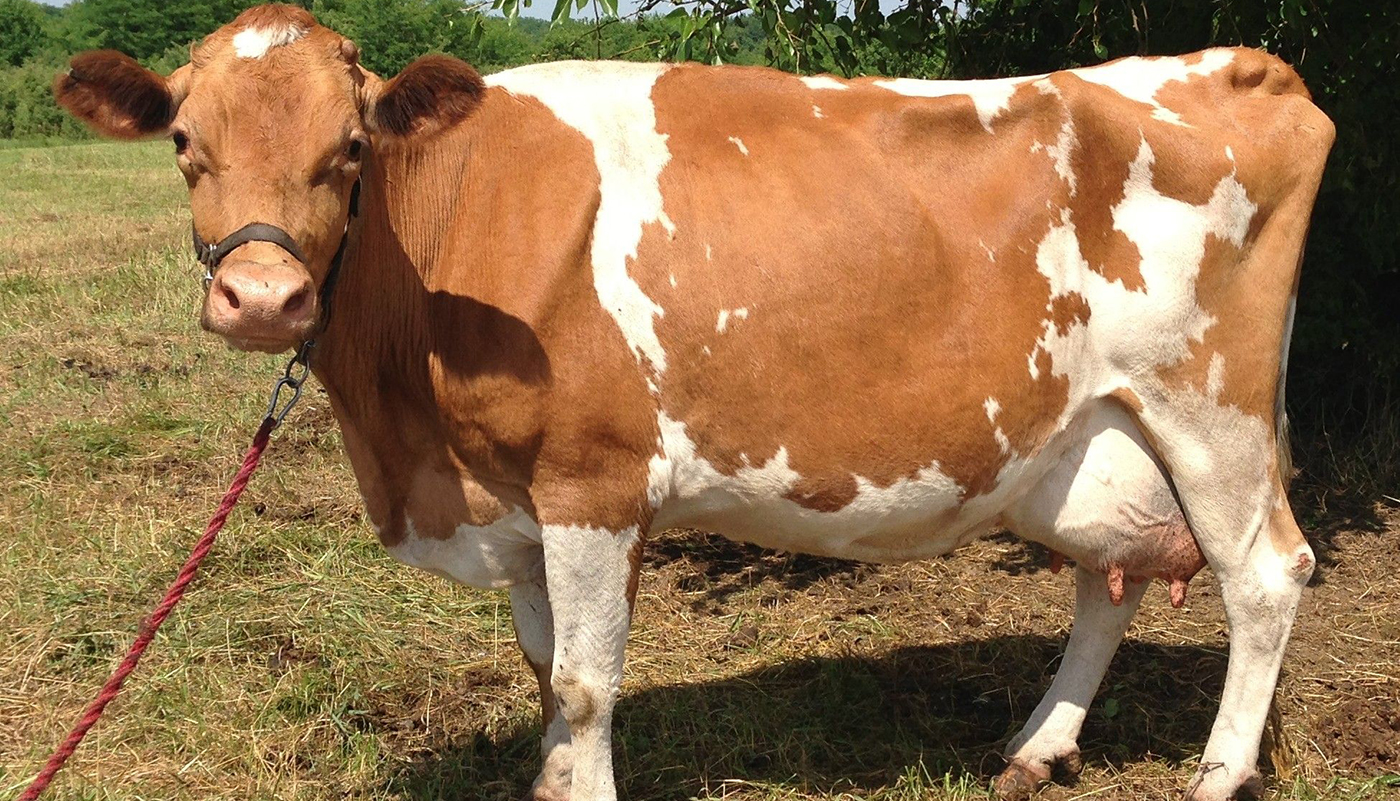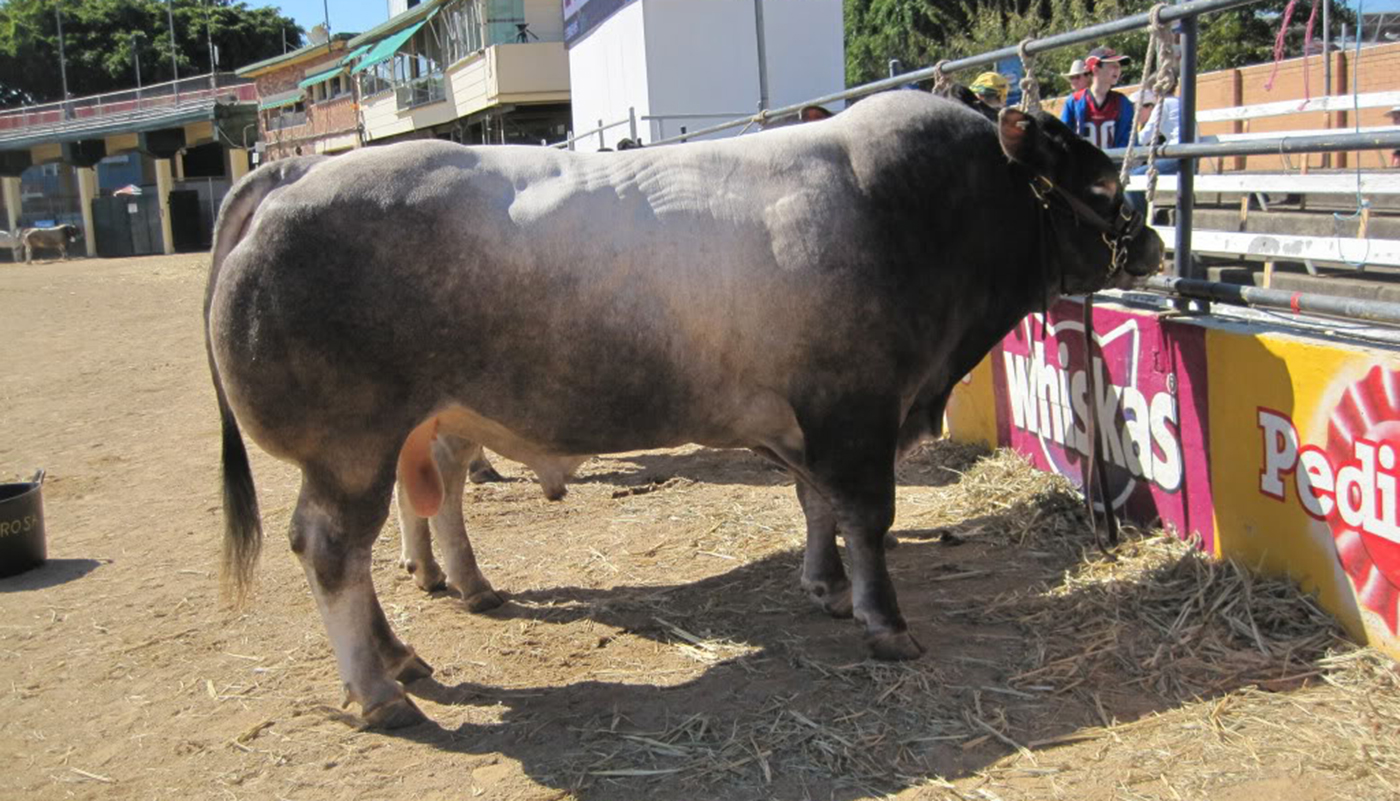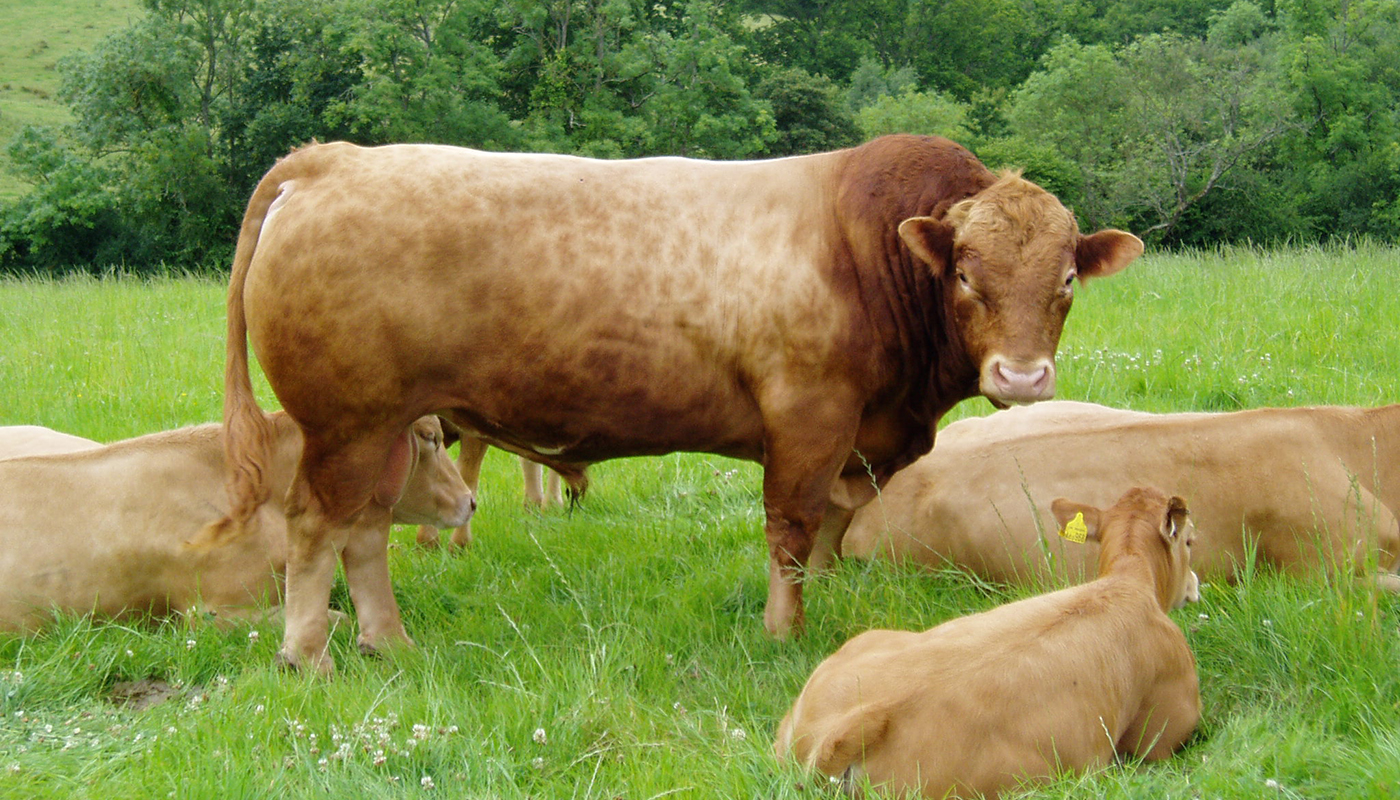
The Texas Longhorn has as history that is entrenched in the Texas cattle industry. They are well known for the characteristically long horns with some reaching a record length of 129.5 inches long. They were once highly regarded for their beef and as draft bulls or riding cattle. It was no uncommon sight to see someone riding on the back of a Texas Longhorn. Their gentle nature and tolerance of humans along with their remarkable intelligence is making them more and more popular as riding steers.
TEXAS LONGHORN CATTLE BREED OF CATTLE QUICK PROFILE OVERVIEW
|
|
|---|---|
| Texas Longhorn cattle have been a Texas symbol since the Spanish first arrived in America. | |
| Country of Origin: | America |
| Other Names: | Longhorn |
| Main Purpose: | Meat |
| You may Also Like: | 35 Best Cattle Breeds for Milk – Dairy Cattle |
| You may Also Like: | 47 Best Cattle Breeds for Meat – Beef Cattle |
| Can be used for | Breed, Meat, Draft and riding |
| Ideal Climate: | Heat, Cold, Most Climates |
| Conservation Status: |
Listed by the *ALC Status/Rarity: Critical |
| Health Issues? | No known health issues |
| Good Starter Cattle? | Novice to intermediate Cattle farmer/keeper level |
| Cattle Associations: | Texas Longhorn Cattle Association, Texas Longhorn Breeders Association, International Texas Longhorn Association, Texas Longhorn Breeders Association of America, West Texas Longhorn Association, Cattlemen’s Texas Longhorn Register, Heart of Texas Texas Longhorn Association and South Texas Longhorn Association. |
| Cattle Clubs: | Please see the “Cattle Associations” section above for more information on the various breeders’ clubs, shows, and registries. |
| Where to buy them? | Please see the “Cattle Associations” section above for more information on where to acquire Texas Longhorn cattle |
| Child Friendly? | Livestock should not be left unattended around unsupervised children |
| General Information: | The Texas longhorn horns of various steers along with their stories can be found in the Online National Texas Longhorn Museum. There is also a gallery of pictures of furniture and items that have been made over the years from the horns of this incredible cattle breed. |
| Note: *ALC stands for American Livestock Conservancy | |
PHYSICAL CHARACTERISTICS |
||||||||||||||||||||||||||||||||
|---|---|---|---|---|---|---|---|---|---|---|---|---|---|---|---|---|---|---|---|---|---|---|---|---|---|---|---|---|---|---|---|---|
| Texas Longhorn cattle have long lyre-shaped horns that can reach up to 6 foot in length. They are a small to medium framed cattle breed with a typical cattle blockish body that is well defined with a medium sized rectangular face and slightly upturned snout. They have long sturdy legs and a loos dewlap. | ||||||||||||||||||||||||||||||||
| Size: | Small to medium | |||||||||||||||||||||||||||||||
|
||||||||||||||||||||||||||||||||
COW BREEDING & MILKING INFORMATION |
|
|---|---|
| Most Cattle produce milk but not all of them are used in the dairy Cattle capacity for their milk. Cows only calve once a year and should have 12 to 14-month inter-calving cycle. Their milk yield is poor, and they are not the best dairy cows. They are excellent mothers with good motherly instincts that protect their young with vigor. The group surrounds the young when they sleep in order to keep them safe from any dangers. They do not have a lot of birthing problems and the cows are easy birthers. | |
| Breeding Period/cycle: | Usually lasts 6 to 24 hours Most ave. 12 to 16 hours Cows usually come on heat every 21 days. |
| Estrous cycle: | Ave. 17 days to 24 days Heifer – usually ave. 20 days Cows – usually ave. 21 days |
| Gestation Period: | Usually, around 279 to 287 days but most gestation is 283 days. Cows that are carrying bull calf’s their gestation period is usually a little longer than cows that are carrying heifer calves. |
| No. Calves/Litter: | 1 calf at a time. Cows rarely have twins or triplets, but it can happen |
| Lactation Period: | Cows lactation period can last for up to about 10 months (305) days. |
| Milking From: | 1 to 6 weeks after Calving |
| Drying off Period: | The cow should have a 12 to 14-month inter-calving cycle. Drying off period for around 60 days before she can calve again. |
| Milk Quality: | Good |
| Milk Ideal for: | Calves |
| You may Also Like: | 35 Best Cattle Breeds for Milk – Dairy Cattle |
CATTLE MEAT PRODUCTION INFORMATION |
||||||||
|---|---|---|---|---|---|---|---|---|
| The Texas Longhorn has a good quality of beef that is naturally less in fat content and generally a lot leaner than most beef. This makes it lower in cholesterol for the health conscious. They are fast growers and have a good meat to bone ration with good carcass yields and dress out percentages and minimal waste. | ||||||||
| Meat Production? | Yes, Quality: Good | |||||||
|
||||||||
| You may Also Like: | 47 Best Cattle Breeds for Meat – Beef Cattle | |||||||
CATTLE SKIN PRODUCTION INFORMATION |
||||||||
|---|---|---|---|---|---|---|---|---|
| Most meat Cattle will have a skin by-product, and these are usually used in some form or just as a hide. They are not specifically been bred for their hides, but it is a by-product of their meat production and has been used for centuries in various skin, hides and leather production. | ||||||||
| Skin Production? | No, Quality: Good | |||||||
| Skin is used to Produce: | Calf/cow skin leather products such as shoes, car seats, fine leather coats, gloves, handbags, belts, furniture, rugs, etc. | |||||||
|
||||||||
HISTORY
The Texas Longhorn cattle can trace its roots back to the cattle that were first brought to the New World by Christopher Columbus and various other Spanish colonists that settled in the area.
The Texas Longhorn is well known for the hardy, disease resistant characteristics and the ability to withstand high drought-stress situations.
Genetic testing of the Texas Longhorn cattle breed has shown them to be descendant from ancient breeds of cattle. The lineage is 85% of “taurine” which descended from the domestication of the wild aurochs that were found in the Middle East. And 15% of the “indicine” which were the domesticated version of the aurochs in India.
The first domesticated cattle breeds were brought to America or the New World in 1493 by Christopher Columbus. Spanish Colonists brought more cattle with them in various other expeditions. These cattle consisted of three different breeds namely the Retinto, Grande Pieto, and Barrenda cattle. As the Spanish moved north they herded their cattle with them until they settled in the area that today is known as Texas.
The cattle of the settlers were either turned loose or escaped to live feral in the wild for the next few centuries and over several generations, these cattle developed a high feed-and drought-stress tolerance along with other desirable survival/hardy traits. These cattle were obtained by the early Texas settlers and mixed with their domesticated cattle to create the rangy, long-legged, long horned and hardy cattle.
In the years that followed the Texas Longhorns lean beef became a less sort after commodity as tallow become a consumer demand in that era.
The Texas Longhorn started to decline in numbers as its popularity was over taken by breeds that could give more supply for the demand of the consumers.
In 1927 the United States Forest Service was the organization that saved the Texas Longhorn from near extinction. They collected a small herd of the breed from the Wichita Mountains Wildlife Refuge in Oklahoma. A Texas Longhorn became the mascot of the University of Texas at Austin in 1917 and an image of Bevo was commonly associated with the school’s sports team “The Texas Longhorns”. This was also good for the breed as they started to once again get some attention.
J. Frank Dobie and some other Texans gathered up small herds of the Texas Longhorn cattle breed to keep in the Texas State Parks. With this project on the way the breed started to gain more interest and their longevity, intelligence and ability to thrive on marginal pastures started to once again earn them some merit. Thus their breed slowly started to once again be revived as beef stock and their link to the history of Texas.
Video
USEFUL LINKS
- Purebred Dairy Cattle Association
- American Dairy Association
- National Association of Animal Breeders
- American Dairy Science Association
- United States Cattlemen’s Association
- National Cattlemen’s Beef Association
- American National Cattlewomen
- Beef Cattle Breed Associations
- National Cattlemen’s Beef Association
- Fur Commission USA
- North American Meat Institute
- American Livestock Conservancy
- Animal Shelter (ASPCA)
- American Veterinary Medical Association
- American Animal Welfare Society
- American Animal Control
- American Society of Animal Science
- United States Department of Agriculture
 Brahman Cattle Breed – Everything You Need to Know
Brahman Cattle Breed – Everything You Need to Know Red Poll Cattle Breed – Everything You Need to Know
Red Poll Cattle Breed – Everything You Need to Know Guernsey Cattle Breed – Everything You Need to Know
Guernsey Cattle Breed – Everything You Need to Know Braunvieh Cattle Breed – Everything You Need to Know
Braunvieh Cattle Breed – Everything You Need to Know Shorthorn Cattle Breed – Everything You Need to Know
Shorthorn Cattle Breed – Everything You Need to Know Agerolese Cattle Breed – Everything You Need to Know
Agerolese Cattle Breed – Everything You Need to Know Hungarian Grey Cattle Breed – Everything You Need to Know
Hungarian Grey Cattle Breed – Everything You Need to Know American Milking Devon Cattle Breed – Everything You Need to Know
American Milking Devon Cattle Breed – Everything You Need to Know Beefmaster Cattle Breed – Everything You Need to Know
Beefmaster Cattle Breed – Everything You Need to Know Senepol Cattle Breed – Everything You Need to Know
Senepol Cattle Breed – Everything You Need to Know Bazadaise Cattle Breed – Everything You Need to Know
Bazadaise Cattle Breed – Everything You Need to Know Gelbvieh Cattle Breed – Everything You Need to Know
Gelbvieh Cattle Breed – Everything You Need to Know